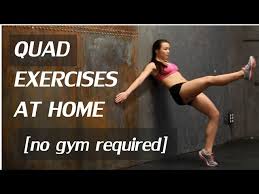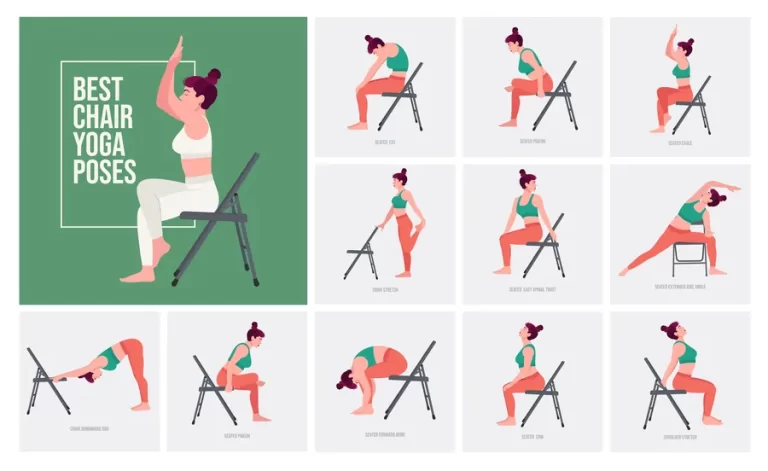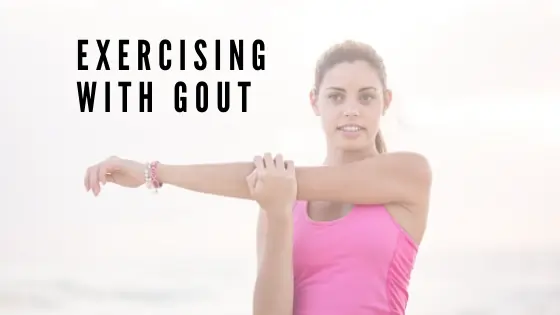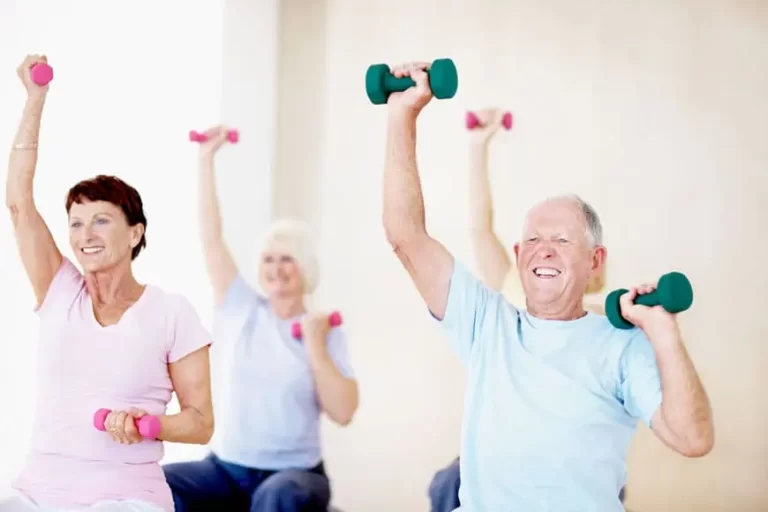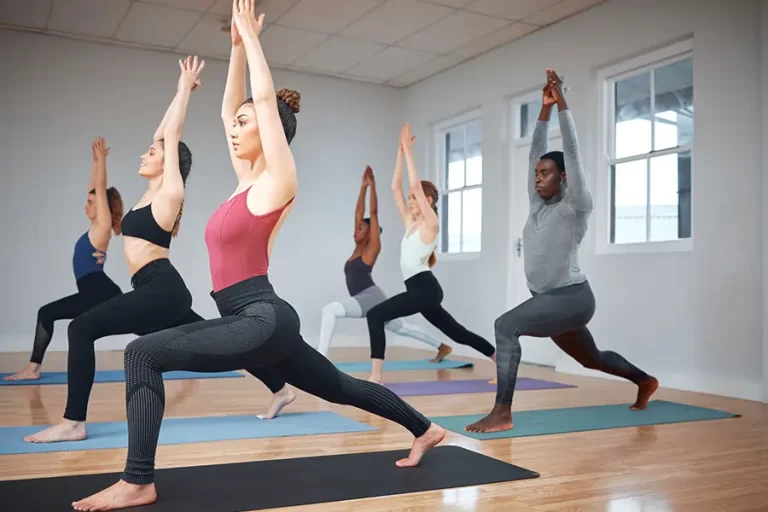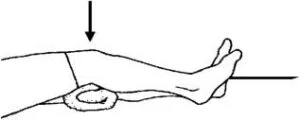47 Killer Quad Exercises You Can Do Anywhere
Introduction
The quadriceps home workout is challenging to give a single quad workout at home because everyone has different degrees of strength and fitness. You also need access to all the tools and equipment, such as the leg press and barbells, needed to create a whole training regimen, unlike in the gym.
Doing a whole leg workout at home instead of just a quadriceps workout may be significantly healthier. however, have a fantastic quadriceps training regimen to follow if your main objective is quad growth and you’re looking for a regimen you can perform at home specifically targeting this muscle area. After the workout, stay tuned as we walk through the specific instructions for every exercise.
Now that you have the routine down, let’s talk about how to execute the finest at-home quad workouts. When executing them, the correct posture is essential, so follow the directions carefully and give yourself enough practice time. This list of the top at-home quad workouts includes weight-only exercises that you can do without any additional equipment. Feel free to add additional external pressure, like dumbbells or resistance bands, if you have the appropriate tools at home.
To minimize risks and achieve the best possible outcomes, consider form and method when executing these exercises. Choose a weight or resistance level to begin with that will push you while still enabling you to perform the required number of repetitions with proper form. Add weight or resistance to increase the intensity as you advance progressively.
To avoid injury and aid in healing, always warm up before beginning an exercise routine and cool down afterward. Additionally, always pay attention to your body. If you feel pain or discomfort, stop working out and get help from a healthcare physician or fitness expert.
Following are the Best 47 Quadriceps Home Workouts
Partial squats
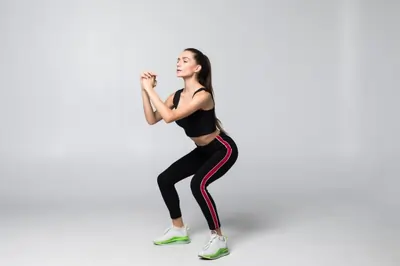
The primary muscles employed were the quadriceps, gluteus, and hamstrings.
Your thighs, front, and back should feel especially nice after this workout.
Equipment needed: As the exercise becomes easier to finish, you can progressively increase the resistance by holding hand weights. To increase the level of resistance, start with 5 lb. weights and work your path up to 10 lb. weights.
4-5 sessions with ten reps each session,
Step-by-step instructions: Assume a shoulder-width posture with your feet apart. You can put your hands on the front of your thighs or extend your arm in front of you. If needed, use the back of a chair or wall as a balancing point.
Sustain an elevated chest while progressively lowering your hips by approximately 10 inches, simulating a chair.
Hold the squat for five seconds, keeping your weight firmly planted on your heels.
Through your heels, drive your body back up to a standing position.
Tip: neglect of leaning forward from the waist.
Quad foam roller
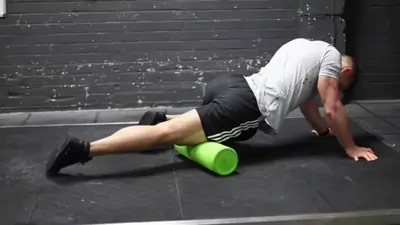
Why it works: There’s a feeling that foam rollers were designed with quads in mind at times. No other area of the body seems to gain as much by rolling on the foam to relieve muscle spasms.
Instructions: Place the roller under your quads and begin in the forearm plank posture.
As you progressively move down the roller until it is just above your knees, brace yourself with your upper body and core. After that, continue rolling in the other direction until you get to your hip flexors.
Take 30 seconds to complete this.
Keep yourself there for a few breaths when you find a tender region.
The suggested dosage is two sets of 20 seconds each, separated by a 30-second break.
Four-phase rocking

Why it works: This unusual stance targets the hips and quadriceps and is a combination of two well-known yoga poses: cow and child’s pose.
How to achieve it: With your knees flexed 90 degrees, move on all fours. Maintain a straight back to ensure that your torso creates a line connecting your head to your hips. Maintain a flat grip with your hands on the ground. This is where you are assumed to initiate.
Push your hips and torso back while maintaining a straight back and firmly planted hands on the floor. When your glutes are a little higher than your heels, stop and take a gradual step back to the beginning.
The recommended regimen is two sets of ten reps with a 30-second break in between.
Jump squat
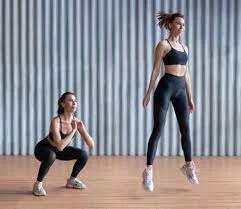
A fantastic quad exercise that doubles as a plyometric workout is the squat jump. You have to exert enough lower body force to lift your body into the air.
Your quadriceps will produce more power as a result, which will enhance their overall strength and function.
The proper way to perform a squat jump is to stand with your feet hip-width apart, your arms by your sides, your chest raised, and your core engaged.
Squat: Drive your arms forward, bend your knees, and sit back with your butt as if you were reaching for a chair.
Straighten your knees and hips, use your arms to propel your body as far as you can, and push through your heels, midfoot, and toes to explode upward as high as you can jump.
As soon as you touch down, instantly go into a full squat to restart the cycle by bending your knees to absorb the impact.
Move from rep to rep with force and agility.
Perform 15–20 repetitions.
Squat using body weight
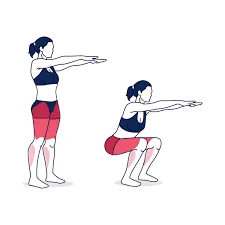
Think of the bodyweight squat as the best quad exercise you can do at home. It’s the main exercise to strengthen your lower body as a whole, especially your quadriceps. They should always be a part of your program, even if it’s only as a circuit or a means to wrap off your workout if you’re not tired afterward.
If strength training is what you require, the bodyweight squat will help you get the lower body power needed to go to more advanced exercises like the pistol squat. Additionally, if your at-home exercise regimen is only temporary, sticking to the squat will help you get ready for your return to the gym.
How to squat using Your bodyweight: Step one should place your feet shoulder-width apart while standing. Your body’s structure will determine how much wider or narrower you can go. Put your toes pointed slightly out.
Lean your hips back and begin lowering your upper body. Maintain a taut, straight back while pulling your scapula back.
Allow your knee joint to straddle your feet the entire way down, but let it slip forward as you drop. Keep the knee joint from slipping inward or outward.
Strive to lower your shoulders in a vertical line as you descend. Continue until your thighs’ tops are parallel, or below parallel, and then raise yourself.
For added balance, you can keep your arms extended.
Perform 2–3 sets of 10–15 repetitions each day.
The bodyweight squat is executed by the following muscles: rectus femoris, gluteus, gastrocnemius, soleus, biceps femoris, semitendinosus, semimembranosus, and vastus lateralis, intermedialis, medialis.
Elevate your legs straight
One easy way to get your quad muscles operating properly is to perform a straight leg raise. This is the method used.
How to achieve: Discover a perfect texture and lie on your back.
Your uninjured leg’s knee (the one that wasn’t operated on) should be bent to a 90-degree angle. Maintain a level footing on the surface. Don’t bend your other leg; instead, keep it straight. Tie your toes with the ceiling in mind.
Forcefully extend the affected leg 12 inches from the ground by tensing the muscles of the front thighs. Hold on for five seconds.
Lower your leg to the ground gradually. Ten to fifteen repetitions, then relax
Things to Remember
During this exercise, the lifted leg’s knee should stay completely straight. Utilizing the muscles on the front of your hip joint, concentrate on lifting.
desire a more difficult task. Before you lift, put a two or three-pound cuff weight on your ankle. An alternative would be to encircle both ankles with resistance bands.
Step upward
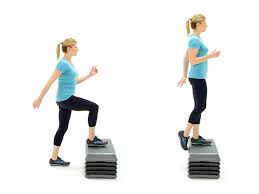
The step-up is a great way to build your gluteal muscles (hips and buttocks), hamstrings, and quadriceps.
A sturdy bench, box, or platform that you can step up and down on is needed for this exercise.
This is the step-up workout in action: Remain six inches away from the bench, box, or platform.
Raise your left foot so that it touches your right.
Step back down with your left foot, firmly placing it on the floor, bending your right knee.
With control, lower the right foot to the same level as the left.
Do this eight or twelve times.
Change legs and go through steps 1 through 6 again.
You can raise the platform higher and/or grip two dumbbells in each hand as your strength increases.
Things to Remember
Utilize a fairly low step when first starting (6 to 8 inches high), especially if you are recuperating from an injury or have stability concerns. To have somewhere to grab onto for support, you can also position the step near a wall or the back of a sofa.
As you take a step up, pay attention to your posture and contract your core muscles. Never should it be necessary to “lunge” in. The step has to be decreased if you believe that it is too high.
Shorter arc quads
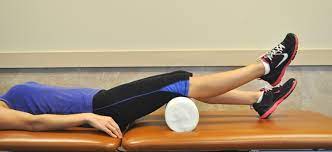
One excellent exercise to concentrate on correctly contracting your quadriceps muscles is the short arc quad.
Here’s how to go about it: Assume a prone position. To elevate your knee, use a basketball or a yoga block.
Bend your knee and slowly straighten it until it is straight.
With your toes pointing upward, tense your quadriceps. Maintain this position in the area for five seconds.
Drop your leg gradually.
Do this fifteen times.
Things to Remember
Make careful to move your leg slowly and steadily as you raise and lower it. Ensure that your rear knee remains in contact with the bolster. Try to contract your quadriceps and straighten your knee all the way when it is fully extended.
Pay attention to your body posture to maximize your short arc. As you raise your leg, make sure your hips are square to the floor. As you lift your leg, try to drag your hip down.
Another way to increase the difficulty of this exercise is to cuff a tiny 2- or 3-pound weight to your ankle.
Slides with walls
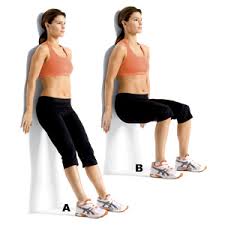
The wall slide workout targets your hamstrings, glutes, and quadriceps, among other muscle groups.
Here’s how to go about it: Place your feet shoulder-width apart and stand straight up, with your back against a wall. When your knees are bent at a 45-degree angle, Sliding your back down the wall for five counts, bend them carefully.
You shouldn’t bend much farther than this because it will strain your knees excessively. Keep your posture for five seconds.
Sliding up the wall slowly will help you straighten your knees and become completely upright.
Ten more times, repeat.
Remember, if this activity becomes more painful or difficult for you, stop.
Things to Remember
Move slowly and steadily as you lower and raise yourself. Avoid squatting too low as this can put too much strain on your knees. Regaining your balance might also be challenging if you squat too low.
Chair Position
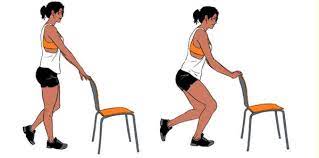
A simple-looking yoga practice that may work wonders for strengthening the quadriceps and lower back is the chair pose. Held for longer lengths of time, the stance can be difficult even for bodybuilders.
How to achieve: Put your feet together and your arms by your sides to start the chair stance.
Raise your arms straight up into the air, bend your knees, and crouch down so that you resemble a person sitting on a chair.
Extend the lower back while maintaining your weight on your heels.
For ten to fifteen breaths, maintain this position. To get back to where you were, straighten your legs.
Accomplish the chair position three or four more times.
Things to Remember
Try to keep your thighs and buttocks parallel to the floor when you perform the chair pose. It can take some time for this. Try lowering your buttocks to the ideal position for a few moments until you reach there, then relax back a little when things get difficult. You’ll succeed eventually if you persevere and give it enough time.
Keep your buttocks above your knees. This can put extra strain on the knees by shifting the resistance to the hamstrings.
Extensions of the terminal knee
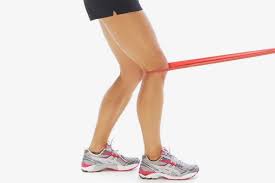
Standing quadriceps can be strengthened with the help of a basic yet efficient exercise called terminal knee extension (TKE). The TKE is regarded as a useful workout. As your body weight is supported, your quadriceps will be put to use.
You will need a resistance band, such as a Theraband, to perform this workout. One can be obtained from your PT or purchased from a large box retailer.
This is the way to accomplish it: To anchor your resistance band, tie it around anything sturdy. It should be roughly the same height as your knee. (A heavy table’s leg works well for this; just make sure it won’t move.)With the leg, you want to work out, step into the loop.
With the resistance band wrapped around your knee, face the anchor point. Your knee should be slightly bent. As you gradually straighten your knee, apply pressure on the band. Attempt to fully straighten your knee as much as possible; the band should offer some resistance.
Hold the pose for three seconds after your knee is straight and the band is snug.
Once more, slowly bend your knee slightly.
Do the exercise fifteen times over.
Things to Remember
Proceed cautiously and slowly. Make sure your knee stays squarely over your toes .it shouldn’t sag forward and protrude over them. Your knee may suffer undue strain if you do this. You can add difficulty to the TKE by positioning a little foam pad beneath your stance foot. This can also be done while standing just on one foot as a balancing practice.
Sissy Squats
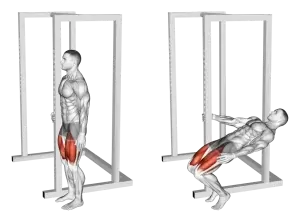
Why: This is a tough bodyweight exercise that strengthens the quadriceps, strengthens the core, and enhances balance. This one requires some skill, but it’s a simple movement that can be done at home without a kit. Attempt to stabilize your knees until they are completely down, then raise them back up to enjoy the advantages. Sissy squats are a hard exercise that can be performed without any equipment, regardless of fitness level. Although they may require some practice, they are excellent for strengthening the core and enhancing balance.
To perform the sissy squat: Preserve your feet just a little bit wider than your hips. pointing your toes forward.
Put your hands on your hips (for balance, you can also grab onto a wall or the back of a chair).
Make a straight, firm line from your knees to your head by bending at the knees and slanting slightly backward while using your core.
As you keep your backward lean, keep bending at the knees as close to the ground as you can.
At the bottom, pause, then rise.
Perform ten to twelve repetitions.
Things to Remember
Evaluate your body as a strong plank from your shoulders to your knees to obtain the most out of sissy squats.
By using one arm to support a weight plate on your chest and the other to balance yourself by holding onto a wall or the back of a chair, you can intensify the exercise.
Spanish squats with bands
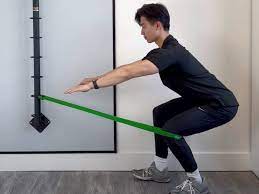
A resistance band is also needed for the banded Spanish squat. For those who have knee pain when performing hard lifting, it is perfect. As you lower yourself into a squat, the resistance band keeps your shins tight and perpendicular to the floor, which stabilizes your knees.
Why It Matters: Should you have knee pain when performing heavier exercises, Spanish squats are an excellent low-load substitute. If you don’t have access to a leg extension machine, the band is a fantastic alternative for effectively isolating the quads while maintaining balance and keeping your shins upright.
Doing a Spanish squat with bands: At knee height, loop or fasten a resistance band to a sturdy surface (such as a table leg).
Take a step inside the band until it encircles your rear knees.
Step backward a few times until the band tenses up strongly.
Maintaining a narrow foot position, drive your hips back and descend into a deep squat.
At the bottom, pause, then leap back up with force.
Perform ten to twelve repetitions.
Things to Remember
Go back far enough so that the band’s tension prevents your knees from shifting in front of your feet, for optimal knee protection. Your lower leg should be at a 90-degree angle and perpendicular to the ground when you squat. The knee joint is put under unnecessary strain when squatting with the knee forward.
Banded Spanish squats provide the same potent quadratic impact as a leg extension machine when performed correctly.
Single-leg squat to-chair
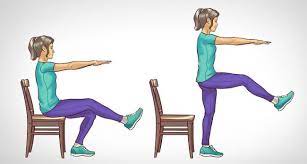
How to achieve: Position your feet shoulder-width separated, foot one foot slightly ahead of the other, and face a strong chair with your back to the chair. Make a fist with your hands and hold it before your chest. The sole on the foot should be perpendicular with the chair legs. This is where everything begins.
To drop into a squat, contract your core, set your weight into your back heel, thrust your hips back, and bend your back knee. Straighten and lift your front leg as you drop your buttocks to the chair. Position your hand on the chair’s butt and grab a seat.
Squeeze your glute at the bottom of the squat, pause, and drive via your heel to stand at the top. one repetition is this, execute 5 reps
Leg extensions while kneeling
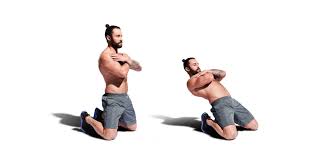
Simple yet effective are kneeling leg extensions. They are perfect for those who struggle with balance and require no special equipment just a floor mat or carpet. The goal is to apply the proper amount of resistance to your quadriceps muscles using the weight of your upper body.
Why: The kneeling leg extension is more accessible than the sissy squat and offers significant mobility advantages in addition to strengthening the muscles through a wide range of motion. Focus on quickly raising your body to an upright position and then lowering it back to the ground in less than three or four seconds.
How to accomplish it to extend your legs when kneeling: With your toes curled beneath your feet and your knees about shoulder-width apart, kneel on a mat or carpeted surface.
Place your hands across your chest and sit on your heels.
Lean backward gradually while contracting your core and maintaining a stiff body from your knees to your shoulders.
As far as you can without failing your equilibrium, come back.
Hold for a brief moment before bringing your body back to a tight, erect posture.
Execute ten to twelve repetitions.
Things to Remember
Similar to sissy squats, as you lean back, your body should be as solid as a plank. You’re reclining too much. This also holds if you experience knee pain. Increase the length of the grip and the amount of back leaning gradually with time. Your quads will become more flexible and your knees stronger and more sturdy with continuation.
Lunges While Walking
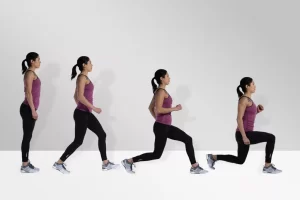
regardless of strength, all trainees should perform the walking lunge. It can serve as one of your primary quad workouts or an outrageous workout finale. It means doing lunges constantly in one direction, as the name implies. This provides stability to the exercise while also strengthening the lower body.
These can be programmed in a variety of manners. One way to pre-fatigue the lower body muscles is to employ walking lunges, as many individuals find bodyweight exercises to be easy.To attain this, walk into every workout with an increasing number of walking lunges under your belt. For instance, complete your quad training and fifty walking lunges throughout the first week. Step up to 75 walking lunges in week two, and 75 in week three. Increase it to 100 while maintaining the same quad workout.
Making sure you’re always employing progressive overload is simple with this method. The lunges boost your volume even if you don’t do extra repetitions in the quad workout portion.
For those who have developed their balance and knee strength, this is a more advanced workout. Walking lunges work the muscles in the legs, hips, glutes, and core.
Wearing sturdy walking shoes, perform the exercise on a level surface for a duration that permits you to take ten to twelve lunging steps.
Why it rocks: By releasing tension in your hips and hamstrings, walking lunges improve range of motion, balance, and posture while testing the strength and endurance of your quadriceps as you go forward.
To execute a walking lunge: Set your feet shoulder-width separated and stand erect. Your hands must be by your sides or on your hips.
With your right foot flat on the ground, take a step forward.
Drop yourself until your thigh is perpendicular to the floor and your right knee is bent at a ninety-degree angle.
Move forward with your left foot and repeat the motion with your right leg.
As you lunge, keep walking for a total of 10 to 12 repetitions on each leg.
Execute two to three sessions
Things to Remember
When performing walking lunges, control must be maintained. Maintain an erect posture, your shoulders slightly back, and your core muscles taut. Stretch out your arms to help you balance if you ever feel unsteady.
Steer clear of too long or short steps since this can put too much strain on your knees. To prevent damage, make sure your calf and thigh are at a 90-degree angle when performing the lunge.
Bulgarian Split Squat
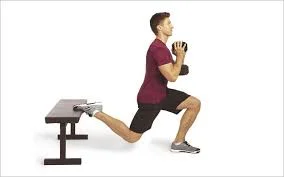
The Bulgarian split squat is a well-known difficult exercise that develops the quadriceps.
It’s a split squat, but instead of including it in the calculation, the back leg is raised and the top of the foot rests on an elevated object (a box, chair, or couch).
It’s crucial to take your time finding your starting position for this exercise before you start performing the reps.
The Bulgarian Split Squat technique: A framework of some kind is required so that you can rest your back foot. It should have a height that is comparable to a bench.
Face away from the bench as you stand a few feet in front of it. Raise one leg backward to allow the foot to rest on it. Lay your foot so that about half of it hangs off the edge of the ledge. This permits ankle movement throughout your body’s descent.
Move your other foot forward to a distance of approximately three feet. Lower yourself while maintaining an erect torso and pointing your foot straight forward. Lower yourself such that your front shin remains upright and your rear knee is stretched with a small bend.
Your front knee joint should be at a 90-degree angle and your upper thigh should be parallel to the floor when you reach the bottom of the rep.
Side lunge, or lateral lunge
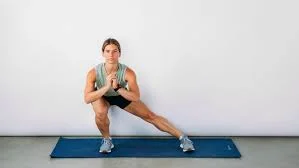
Why it rocks: This variant of the lunge tests the strength and lateral mobility of your legs. This exercise strengthens your inner thigh and works your glutes and hamstrings in addition to the inner and outer heads of the quadriceps, which improves lateral stability at the knee.
exercised the inner thigh, hamstrings, glutes, and quadriceps.
Directions: Grasp your arms in front of you for stability and stand with your feet shoulder-width apart.
Step smartly to the right, bending your right knee to obtain yourself into a squat. Then, initiate dragging your hips back.
Once your thigh is parallel to the floor, squat as low as is comfortable.
Go back to the initiating position and repeat the procedure on the opposite side.
Safety advice: Try not to step down to the point where your groin is uncomfortable.
When you squat down, preserve your knee beyond your second and third toes.
When you’re going back to the beginning position, try not to rotate.
Drop to a curtsy lunge
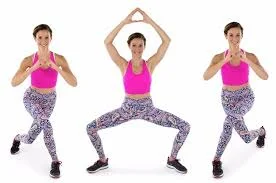
How to achieve: Place your hands at breast height, your feet hip-width apart and fully contract your abdominal muscles.
By bringing the hips back, bending both knees and turning the hips forward, one can squat until the thighs are parallel to the floor.
To stand, position the torso behind oneself and the right foot diagonally behind the left leg.
He or she should stoop down, flexing both knees, while maintaining a taut hip and contracted abdominal muscles.
Return to the starting position for the squat and repeat the curtsy lunge from the opposite side. So, it’s one rep. Continue rotating the opposite side.
per session, two to three times.
Muscle consists of the gluteus, hamstring, quadriceps, and calves
Strange squat
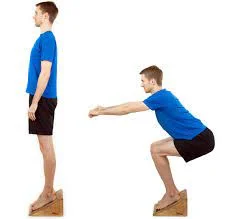
How to achieve: Maintain an upright posture by connecting your abdominal muscles and keeping your feet hip-width apart.
The individual will try to lower himself into a squat position gradually, bending both knees to a minimum of 90 degrees to bring both thighs parallel to the floor. The pace of motion during the descent should be a little slower than it would be in a regular squat since the movement has to be eccentric.
Glute contraction and quick ascent to revert to the starting position. So, it’s one rep. Perform ten iterations.
sessions: every two days
The vastus medialis, vastus intermedialis, vastus lateralis, and rectus femoris are muscles found in the quadriceps femoris.
Stair-jumping
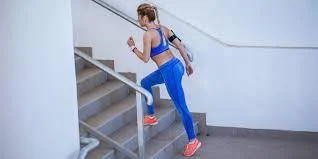
The stair leap is one of the best exercises to incorporate into a bodyweight workout without the need for equipment, provided that your home has stairs or steps.
Plyometric exercises will be performed to develop the strength and power of each leg.
The gait pattern closely mimics the physical demands of running or jumping in sports because it should be a unilateral activity.
Additionally, because only one leg is needed to support the entire body weight during unilateral exercises, unilateral exercise is usually a better way to strengthen the leg muscles when working with weights. This is because unilateral exercise should provide the person with the overload necessary to stimulate muscle hypertrophy and increase strength.
The stair jump requires the following steps to be completed without the use of any equipment
How to achieve: Maintaining proper posture and balance while standing one foot back from a staircase or series of stairs
Leaning solely on your right leg, raise your left foot behind your body, and bend your left knee.
He or she should quickly place their arms behind their back and lift their body higher, landing on the sole’s steps while maintaining a strong core. Step off on the sole to activate the quadriceps. Flex the knee to tone the quadriceps as the individual ascends the previous step. Push via the foot to stand up straightforward. Jump down to return to the starting location safely. After completing each repetition on one leg, switch to the other leg.
10 repetitions twice a day
Safety advice: Box jumps should be neglected if anyone has knee troubles.
Determining a box that is too low is preferable to one that is too high, particularly for novices.
Recognize to bend your knees to deliver some pillow for your jumps.
Inverted lunge
inverted lunges are modifications to the classic lunge that increase the stability of your lead leg, which helps with balance. To construct an inverted lunge more easily, simply construct a halfway proper lunge.
engaged the quads, glutes, and abdominal muscles
Guidelines: Grasp dumbbells at your sides or place your hands on your hips to stand upright.
Step back with one foot on the main path. Once your pointer thigh is similar to the floor, diminish yourself. The posterior knee should be closely in contact with the ground.
As you carry a step back to the initiating, thrust via your front heel.
Repeat, alternating sides every time, for the desired quantity of repetitions.
protection advice: Don’t contact the floor with your rear knee.
If your knees initiate harm, prevent it.
When you lunge, hold your front kneeover your toes but not exceeding them.
one-leg lift
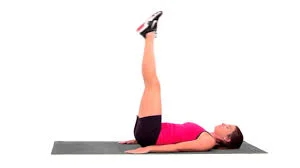
The spot of your quads that transits your hip joint, the rectus femoris, is the concentration of the single-leg raise.
Core, hip flexors, and rectus femoris muscles were exercised.
Instructions: Stretch your legs straight out in front of you while lying on your back. With one foot flat on the ground, flex your knee to a 90-degree angle.
Lift your straight leg till the angle of your thigh parallels the angle of your contrasting thigh, preserving a stretched core and straight leg.
After you’ve conducted the expected amount of repetitions, move back to the initiate position and interchange legs.
Safety tips: Keep your core braced.
neglect locking the knee of your straight leg.
Pulses from elongated legs
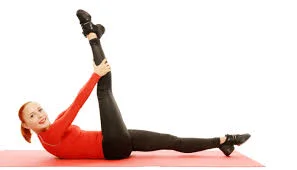
How to achieve: Pulling the right knee to the chest, the person extends their right leg toward the ceiling. Continue to raise your left leg three to five inches above the ground.
Place your fingertips together behind your right knee.
Elevate your upper body 3 to 5 inches by using your abdominal muscles alone, without using your hands. Make sure the lower back is firmly planted in the earth.
Repeat on the other side.execute 10 to 15 reps twice a day.
The quadriceps, rectus femoris, vastus medialis, vastus intermedialis, and vastus lateralis are the muscles involved.
Curtsy leap
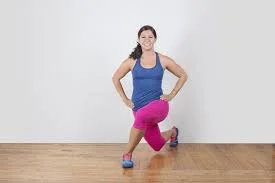
Since it works the legs hard, this is an excellent bodyweight exercise for leg workouts done at home without the use of weights.
Tests will be conducted on the strength of the quadriceps, glutes, hip abductors, adductors, and hamstrings in addition to the core.
How to achieve: Position the hands on your hips or clasp them in front of your chest while standing with your feet shoulder-width apart. This is the initial position.
Retrace your right foot obliquely, basicallytouching the floor with your right knee. Roughly 90 degrees should be flexed on the anterior side of the knee.
To straighten up again and get back to the beginning posture on the other side, push with your left heel. that amounts to one rep. Perform ten repetitions.
two or three times a day
Take a curtsy lunge kick
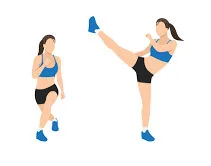
How to achieve: Maintain a stiff posture and stand with your feet hip-width apart. This is where the beginning is at this point.
To drop into a curtsy lunge, flex both knees and take a horizontal step with the right foot behind the left leg.
To get yourself to stand, use your left heel. Subsequently, extend the right leg to the left and attempt a small kick while cautiously maintaining a brief moment of right foot balance.
They will start the next rep right away, so place the right foot down and line it up after the left leg.
After someone has finished all of the repetitions on one side, switch to the other side.
perform 10 to 15 repetitions two times in day
Linking up
How to behave: Lay on your back with your legs bent, and place your feet on the mat hip-distance separated. Try getting your feet as close to your glutes as possible.
Spread your arms out by your sides, palms down.
As you inhale, lift your hips from the pubic bone rather than the navel, utilizing your feet as a firm pressure point.
Apply force to your upper arms. You can settle your hands behind your back and push your pinkie fingers contrasting the mat. Spread your collarbones and roll your shoulders beneath you.
Bring your thighs closer together and firmly push via your heels to preserve a hip-distance posture. To extend your back, extend your rear thighs in the direction of your knees.
To finish the practice, exhale as you release your hands and gently lower yourself to the mat. Three times a week, ten reps
The first portion of guidance is to preserve your arms at your sides simply, and palms down if you have stiff shoulders or hurting hands when endeavoring to tie your hands behind your back.
A crucial part of this posture is preserving your neck in its realistic bend. neglect to squeeze your neck’s back into the mat.
Once your hands are meshed, straighten your chest and fold your upper arms beneath your shoulders. Try not to pull your shoulders too far away from your ears to avoid hurting your neck.
neglect to turn your head to one side while in this stance to preserve a straight line from the floor to the ceiling.
Reverse lunge to a single-leg hop
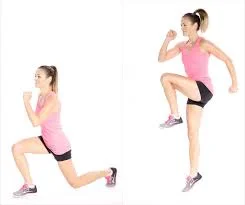
How to achieve: As you stand with your feet shoulder-width apart, tense your core muscles. This is the initial position.
With the right heel off the ground, step backward with the right foot, landing on the surface of the right foot.
As the person descends into a lunge, they both bend their knees to a 90-degree angle. Raise your right arm forward and your left arm back slightly while bending your elbows. Your gluteal region should not be extended, rather than, preserve your hips curled inward and your abdominal muscles tight.
Leap as high as you can while drawing your right knee toward your chest and pushing with your left foot.
Make a second lunge, gradually lowering yourself onto your left foot to return to the starting position.
As you slowly lower yourself to the ground in the standard position on your left foot, adjust yourself to do another lunge. completing ten repetitions. One rep is involved.
Complete every repetition on a single side. Next, repeat the reverse lunge to single leg hop, but this time on the opposite side.
The muscles in question are the hamstring, gluteus, and quadriceps femoris.
Divided squat
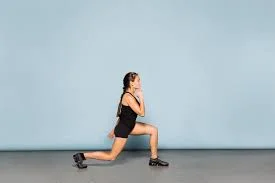
In essence, the divided squat is a static lunge. Though the split squat is just as difficult, if not more so, because it allows you to lift bigger weights, for some reason the lunge gets a lot more attention.
Pro Tip: To increase the intensity of this quad exercise and to put even more strain on your quads, move your weight forward.
With the right foot, take a step forward while keeping the right heel planted as if you were lunging forward. Place your feet’s bottoms under your shoulders. This is the initial position.
bent both knees to bring the legs to a 90-degree angle. The chest’s center needs to be erect and to keep a straight back that is neither twisted nor curled forward, the entire body should be moving forward gradually forward. The right knee should extend above the right foot, and the right quadriceps should be perpendicular to the floor. The groin and abdominal muscles of the body ought to be used.
To return to the position from where you started, push with your right foot. A single rep is significant.
Perform ten repetitions. Change sides twice a day after completing all of the repetitions on one side.
The divided squat is a fantastic quad workout that works your strength and stability by strengthening one leg and stretching the other. You can perform this exercise on an exercise mat or a carpeted floor for comfort.
Things to Remember
If this is your first time doing this, practice it close to a chair or wall so you have something to grab onto for balance. Tuck your toes under your rear foot so that you are on the ball of your foot for more stability. Check the location of your feet if you have knee pain; your forward foot may be too far forward or backward. Just descend as far as is comfortable.
As you get stronger, tap your knee to the ground while squatting instead of resting it there and then raise yourself continuously. Still, take your time and avoid “bouncing” when you go up and down.
Transforming a forward lunge into a backward lunge
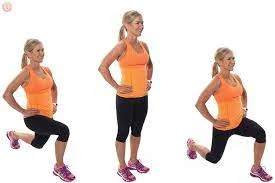
How to achieve: When someone gets up for the first time, their feet should be shoulder-width apart. Hold your hands close to your heart. This is the initial position.
Raise the right foot, go forward two kilometers, and then plant the foot firmly on the ground. The left tibia and right quadriceps should be nearer to the floor as the person flexes both knees. The body must bend slightly forward to keep a flat back that isn’t twisted or oval. The pelvis and core should be engaged, and the right knee should be extended past the right foot. Use force to return to the starting position, then Step backward with the right foot, keeping the heel off the ground. Next, take a new position on the footsole, about two feet away. The left quad and right tibia should be nearly parallel to the floor as the person bends both knees. The back should be straight, not bent or rounded, by gradually bending the body forward. The pelvis and abdominals should be level, and the left knee should extend past the left foot.
To get back to the beginning position, give thrust with the heel of your left foot. A single rep is significant. Perform ten iterations.
After you’ve finished all the repetitions on the first leg, move on to the second.
The quadriceps femoris, hamstring, gluteus, and calf are the muscles in question.
Froggers
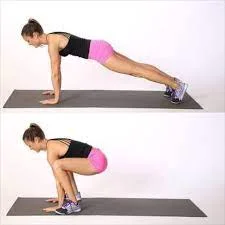
With your thighs parallel to the floor and your feet slightly apart, perform a full squat. The head is centered, the chin is slightly elevated, and the lower back gradually bends. The body is facing the extended arms.
To help the legs come out of the full squat posture at a sixty-degree angle with the arms raised over the head, take a deep breath, sweep the arms backward, and then quickly forward. Prepare to land when you reach the peak of the jump. Complete a full squat as soon as you land to return to your pre-workout position.
Your modest forward motion will show off your strength in both the horizontal and vertical axes.
Return to a solid squat and instantly perform the jump.
Do five to ten sessions every two days.
frogger modifications for accelerated strength and control over one’s body
A tabletop with straight arms and bowed legs that floats
Simple frogger involves maintaining your arms straight and pulling your legs up to your body.
Slow-moving Toe Pull-Off: Straight arms and constricted legs as you slide toward your hands.
Sumo Frogger: Its arms are straight, hips are more flexible, and it adopts a broad posture.
Straight Leg Frogger requires flexible hamstrings and strong shoulders. Legs and arms have to be in line.
High frogger: Get ready for the handstand, keep your arms straight, and put a lot of pressure on your shoulders.
Although there isn’t a single modification that is superior to further, a person may be satisfied by concentrating on a specific modification over others depending on the situation.
Using the normal Frogger instead of the Slow Toe Pull or Straight Leg Frogger may make it easier for you to maintain your body weight if you struggle with shoulder stability. You can concentrate on the Slow Toe Pull Frogger if you’d like to improve your shoulders and elbows.
As you gain comfort and strength with the basic Frogger, employ the adjustments to improve your hip flexibility, upper body control, and strength.
Squat with a gun
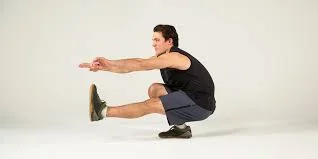
The pistol squat is an incredibly complex advanced single-leg squat posture. Usually, before you’re ready for it, you’ll need some time to work through various progressions. There are various progressions you can perform first if you’re not ready for the full pistol squat. The Bulgarian split squat is a good place to start since it develops the necessary strength and stability. To make it even harder, brace your rear foot against a wall to further prevent the back foot from being of assistance.
An additional adaptation involves performing a full pistol squat with assistance, known as the aided pistol squat. To accomplish this, use a door or counter of some kind. Resistance bands, ropes, or towels wrapped around the sole are even better. The form for the pistol squat remains the same no matter what you use. As you get stronger and better, begin to depend less on your assistance. Keep doing this until you are no longer in need of assistance! You can use the assisted version as a quad exercise finisher even after you’ve mastered it.
Because of the movement’s intense demands on the quads, glutes, hips, ankles, and core, pistol squats are the most difficult movements for a bodyweight workout that can be done without any equipment.
Place the feet together when the person stands up. The pistol squat starts at this point.
With the foot flexed, the left leg must be extended and raised a few inches.
Bend forward at the hips, bring the left leg to hip height, twist the right knee, and squat backward. Extend your arms outward to improve balance.
A person’s attempt to bend their knee to a ninety-degree angle will not succeed.
These are challenging, therefore you should only quit if you are in the beginner group.
Squeeze the right leg’s heel to straighten it as the individual goes back to its starting position. Proceed with the remaining repetitions.
session: according to each person’s ability
Stationary Lunge
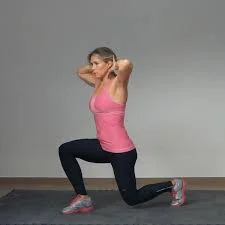
One of our favorite lunge workout options for really working the quadriceps is the stationary lunge. This is because the front leg must extend to generate power and raise the body.
Guidelines for Stationary Lunges: Take a big stride forward while standing with your feet hip-width apart. This is where the split squat position will be precise.
Your back thigh and front shin should be vertical as you descend, and both knees should be at a 90-degree angle.
Always ensure that your toes point forward when you go outside. Lower yourself directly, keeping your torso straight. Drop till the back of your knee joint barely taps the ground.
After that, exert more force and move your body back to its starting position.
Change legs and do it again
Leaping frog
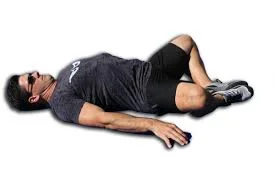
To begin, place your face on the floor or a mat, your knees bent, and your feet hip-width apart.
A diamond pattern must form between a person’s legs when they press their heels together. This is where it all begins. To initiate the correct posture, bring the heels as close to the pelvis as you can; if you want to feel the glutes stretched, you might have to move the pelvis away from the heels.
You can lift your pelvis off the ground and walk directly to your knees by squeezing your glutes. At the maximum point, there should be a one- to two-second break.
To return to your starting position, sag your hips. A single rep is significant. Perform 5–10 iterations.
session: based on available space
In sumo posture squat
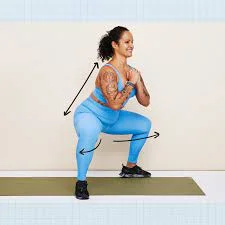
How to achieve: Maintain a standing position with your feet facing forward and your hands at your sides, either folded over your chest or extended in front of you.
The person must shift their weight to their heels and maintain an elevated, straight back and flat chest while moving. He or she must push the hips back, stretch the front arms, and bend the knees to lower themselves into a squat.
To stand, push off the bottoms of your feet and tense your gluteal muscles once. Perform ten iterations. sessions: two or three
To sidestep, squat.
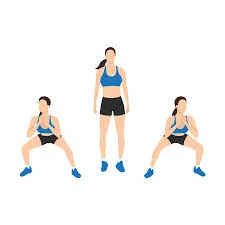
With your hands at your chest, your feet together, and your abs firmly contracted, take a standing position.
Step the right foot out to the side, allowing the feet to spread apart wider than the width of a hip. After pushing the thighs back, bend both knees and flex the hips to descend into a wide squat.
Reposition your right foot to its starting position to achieve knee straightening. It was a single round. Finish all ten rounds.
When you’ve completed all the rounds, switch to the opposite side.
A skip
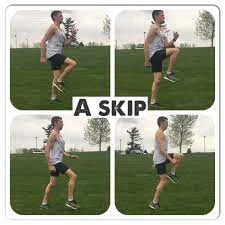
The A-skip is a popular field and way exercise that primes the body for increased effort. For non-track participants, A-skips are a great technique to warm up and prime the body for leg workouts.
How to execute a skip of an A: Spread the person’s feet to their hip breadth when they are standing.
keeping one knee firmly up while maintaining a flexed foot on the raised leg.
Grab the heel off the ground by raising the knee and applying force to the ground with the foot in the proper posture.
As soon as the thigh’s top touches the floor, push that foot down firmly, starting with the heel.
When your heel moves, raise it off the ground to make touch with the ground while standing erect on your toes.
To do the next skip, raise your other knee firmly as soon as your positioned foot touches the ground.
Add a second side arm that swings upward while the other side knee is left hanging.
Archer Squat, or Cossack Squat
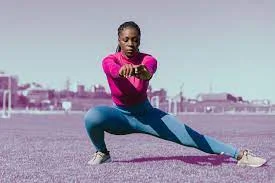
The Cossack squat, also known as the archer squat, is a challenging form of squat in which you shift the majority of your body weight onto one leg.
Squat down to one leg while rotating the other foot to its heel, maintaining a posture one and a half to two times wider than shoulder-width apart.
The Cossack Squat technique: Place your feet 1.5–2 times shoulder-width apart to start. Play around with the width as you travel because this can fluctuate.
Lower yourself laterally to your left foot while standing with your legs straight. Although your body may probably lean forward, maintaining a straight back and a firm core doesn’t loosen.
Keep your right leg straight and twist it outward so that the foot comes up on its heel as you bend your left knee to shift your weight onto your left foot.
Lower yourself laterally until your left knee, bent, forms a 90-degree angle. Step down with your left foot to raise yourself.
You can opt to work one side at a time or switch legs per rep.
Do 15 reps on every side twice a day.
Trekking bears
Why it rocks: This floor exercise using bodyweight works your shoulders, core, and quadriceps. Increase the pace for more heart benefits.
How to: Hang a few inches above the ground in a bear plank position, with shoulders over wrists and knees under hips.
Step forward with the opposing hand and foot carefully, maintaining your hips stable, your head in line with your tailbone, and your knees raised off the ground. Repeat with the other hand and foot to complete four steps.
After that, turn around to take a step back and start over. That amounts to one rep. Execute ten.
Jump tuck
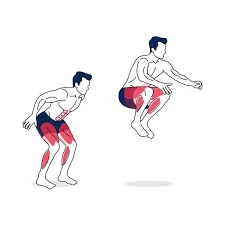
How to achieve: When somebody stands, their feet must be about hip-width apart. To preserve a straight forearm, bend the elbows while preserving the arms at your sides and close to the body. This is where it all initiates.
Bend at the knees, obtain your posterior end into a squat, then shift your weight back. you are keeping in mind that the hips do not descend below the knees.
Togo for pro level, he or she should attempt to show it their all efforts. Lean your knees forward and your abs tight to assist you jump toward your forearms. neglect of bending forward and preserve your back upright.
Step with your feet hip-width separated and land with your knees stretchy. Do ten repetitions of one rep. move back to the squat and resume.
session: twice daily
The prisoner squats
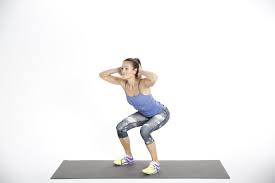
Because you can’t use your arms for momentum, this bodyweight squat variation is a little harder to complete and demands more core activation for balance. It also puts more emphasis on your quads.
No equipment is used.
Execution: Assume an upright position with your elbows spread out to the sides, hands clasped behind your head, shoulders back, chest up, and core engaged. Your feet should be hip-width apart.
As though stretching back to sit in a chair, bend your knees, and sit your hips back. To maintain your balance and posture, tighten your glutes and abs.
Press through your heels to get back up when your thighs are parallel to the floor.
Finish 20 to 30 repetitions.
Squeezes with leg extension
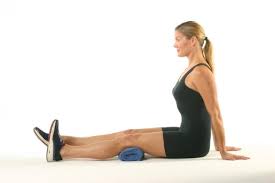
This exercise will help you isolate the motion of knee extension, which is produced by the quad muscles. It’s an excellent quad workout to avoid knee problems. If at all possible, use a substantial ankle weight.
Tools: Ankle weights
Performance: Pull a towel under your right knee while lying on your back. Place your heel on the ground to rest it. With your left foot flat on the bottom, your left knee should be flexed.
Your right leg should be fully extended using your quad to raise your heel off the ground.
To maintain this lifted posture for five seconds, tighten your quadriceps.
To bring your leg back down, relax.
Do 15 repetitions on each side.
Skaters with speed
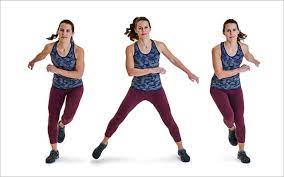
Why it rocks: This plyometric workout improves lower body strength and overall sports performance by having you jump and change direction quickly in the lateral plane.
How to: Place your feet hip-width apart as you stand.
Leap to the right, landing on your right leg with a bent knee and your left toes lightly touching the ground. As you go back to your normal position, cross your left leg behind you.
Leap quickly to the left, then turn around and do it again. After 30 seconds of continuous alternating, move on to the next one.
Wide leap
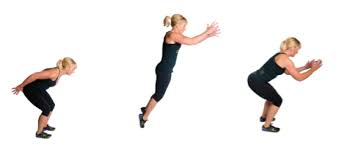
Why it rocks: This intermediate plyometric exercise improves your ability to execute burst-like actions and gets you ready for higher-impact landings. wide leap also strengthens your quads and glutes.
To accommodate wide leaps, set feet hip-width apart.
Bend from hips and glutes, then propel yourself forward in a deliberate leap.
Step onto your feet and land as far away from your starting place as is comfortable for you. That amounts to one rep. Execute ten.
Walks in Squats
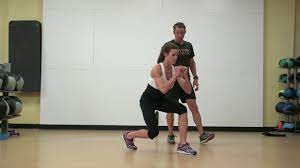
Why it rocks: This is a double-whammy abs buster since you have to truly engage your core to keep your spine long and chest upright as you change levels.
How to: Place your hands in front of your chest and stand with your feet shoulder-width apart.
Sit back and down slightly to form a half squat.
Step down to the right knee, then the left, maintaining your hips stable.
Step forward with your right foot, then your left, and then come back to a half-squat position. That amounts to one rep. Do ten repetitions.
March of the Glute Bridge
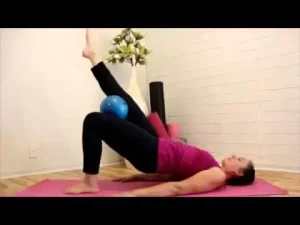
How to achieve: With your feet hip-width apart and your knees bent, lie face up. So that your lower back presses against the floor, and contracts your core.
As you raise your hips from this engaged position, squeeze your glutes at the summit. Hold on a moment. This is the initial position.
Now, raise your right foot off the ground and bend your knee toward your chest. Stop when your hip has shifted to a position similar to a 90-degree angle.
Step back onto the floor, then quickly raise your left foot off the ground to repeat on the opposite side. That amounts to one rep.
Keep your hips raised and march forward, switching feet every few steps.
Lone-Leg Glute Arch
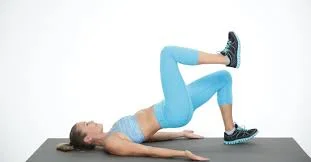
How to achieve: With your hands at your sides and your legs bent, lie face up on the floor with your feet flat on the ground. Press your lower back against the floor by using your core.
Lift your left foot off the ground and stretch your leg from this posture. This is the initial position.
Lift your hips and perform a glute bridge while pushing off your right foot, contracting your core, and squeezing your glutes.
Return your hips to the floor gradually. That amounts to one rep.
Complete all the repetitions on one side, and then switch to the other.
Tips for at-home quad training programming
We want to talk about a few points related to setting up quad workouts at home. First, using techniques like RPE and Time Under Tension are effective ways to manage progressive overload at home. For the majority of the exercises in our workout, aim for an RPE of 8, which indicates that you should be almost exhausted but still have one or two reps left in you. Utilize time under tension by drastically slowing down your motions once that becomes second nature.
The regimen does not include pistol squats, but if you are advanced enough, you might wish to add them or substitute them for another exercise, such as Bulgarian split squats. Another suggestion is to initiate your program with bodyweight squats and complete it with a plyometric exercise like squat jumps.
The idea is that you still have a lot of options, even though your selections are more constrained at home than they are at a gym. Additionally, it allows you to advance even further if you have access to dumbbells or resistance bands.
Variables of the At-Home Quad Workout
Since these exercises necessitate knee joint extension, they are among the greatest at-home quad workouts. Greater flexion will lead to greater extension.
Additionally, there should be as little hip flexion as feasible. The posterior muscles (hamstrings and glutes) are used to help extend the hips when the hip flexes.
Techniques for a Quad Workout at Home
Look for other ways to increase the difficulty of your workouts when you’re mostly using your body weight, a small amount of dumbbells.
Here are two tactics you can use for your at-home quad exercises.
Add Pulses: “Mini-reps” are referred to as pulses and are inserted between each complete rep. If your weight selection is limited, this is a really good approach to increase the amount of time under tension. It can also be used for the majority of quad exercises. Typically performed with body squats, it would also be highly effective when combined with lunges, split squats, Cossack squats, and Bulgarian split squats.
Pay Attention to Time Under Tension (TUT): TUT is the amount of time that your muscle contracts when subjected to a force. The general idea is that because TUT reflects the amount of labor it performs, it has a complex role in muscle growth.
In essence, higher TUT will lead to higher total volume and, eventually, more muscular growth.
Consider these two situations, which both make use of the same lightweight:
Trainee 1: Completes 10 exercises in the allotted 8 seconds as quickly as possible.
Trainee 2: Completes 1 rep at a very slow pace (taking 16 seconds).
Given that he had twice as much TUT in this, trainee 2 would do better. These are a little over the top, but that’s how the idea is better shown. In actuality, the concept of TUT starts to become less significant when you have access to a full gym. You should not be able to perform “fast reps” if you are utilizing the proper loads.
Furthermore, you won’t be able to perform the same number of reps or utilize the same amount of weight if you use TUT. It makes little sense to intentionally use less weight if you have the right equipment, and studies have shown that the consequences are negligible if you are in a situation where you do not have access to a full gym, like at home, TUT is a helpful concept. Remember this when you work out, particularly if you don’t have a lot of weight available. To increase the intensity, you might need to use TUT.
Advantages Of Building Your Quad Strength
Enhanced Visual Attraction: Workouts that target your quads will quickly become your go-to routine if you exercise for looks. When people look at you, they first see the quadriceps muscle, which is located on the front of your thigh. The quadriceps are more noticeable than the hamstrings and are located on the front of the thigh. The four quadriceps muscles are rather straightforward to define, at least to some extent, because of their location. This is because the vastus muscles the medialis and lateralis in particular protrude outward on both sides. Then, they blend into the knee, revealing their “bulge” clearly.
Additionally, the infamous teardrop muscle a ball of muscle located on the inside of the knee is a part of the quadriceps. And nothing examines satisfactorily on your front thigh than a distinctly defined teardrop form.
Enhanced Output: Weakness in the quadriceps will ultimately result in a decline in athletic performance and basic living functions. This is because it is the principal extender and plays a crucial part in leg movements, including walking, running, and jumping. Both routine and athletic actions are made possible by the quadriceps. Also, strong quadriceps are necessary for performing well in gym lifts like squats and deadlifts.
Decreased Risk of Knee Damage: An incredibly strong quadriceps is necessary to maintain bodily wellness. As previously established, the vastus medialis regulates the patella’s position, while the quadriceps stabilize the knee joint. Strong quadriceps aid in preventing knee injuries. Knee discomfort will almost certainly develop if you don’t do this. Lower the chance of suffering a knee injury. A certain muscle group that is trained also strengthens the tendons that are attached to it. If your quads aren’t regularly stimulated, you may have sore or cranky knees. If you obtain into arrangement the shape of the quads, you will find that all four heads of the quadriceps femoris instantly attach to the patella (kneecap) through the quadriceps tendon. As an upshot, strengthening your quadriceps tendons enhances the general stability, health, and functionality of the knee joints.
Boost your leg power: since the quads are one of the largest muscle groups you can practice, performing them enhances your overall leg strength for activities like lunging, squatting, leg pressing, and various lower-body exercises that need you to thrust with your legs.
bolster knee and leg stability: the main muscle group in charge of knee extension is your quadriceps. Sports like skiing, surfing, or tennis that demand static and/or dynamic knee flexion can be more durable when you have strong, well-developed quadriceps. Strengthening your quadriceps also enables your knees to withstand and withstand those intense exercises.
Boost the composition of your body: Your body’s total lean muscle mass will increase as a result of training and quadruple growth. In addition, you will use more energy to contract the quads than other smaller muscle groups because of their size.
Encourage diversity in your training: The quadriceps can be trained in a wide range of manners, including multiple planes of motion, isometric holds, and weighted vs bodyweight workouts. You’ll never get tired of training the quads or run out of things to do.
What Muscles Are in the Quads?
Four muscles located on the upper leg make up the vast muscular group known as the quadriceps. It consists of the rectus femoris and the three vastus muscles.
Vastus Intermedius: The front side of the upper two-thirds of the femur is home to the vastus intermedius.
The vastus medialis is a muscle that goes up the medial side of the femur, or inner thighs. The vastus medialis oblique (VMO), which crosses the knee and regulates where the patella two is placed, is located at the base of the vastus medialis. Vastus medialis workouts are necessary for any exercise schedule since weak quads, which are commonly the result of weak VMO, are the primary origin of troubles at the knee joint.
The vastus lateralis is located on the side of the thigh that is furthest to the outside.
Rectus Femoris: The rectus femoris crosses the hip joint after ascending the femur from the knee joint. It also functions as one of the hip flexors in this role.
What makes one’s quadriceps weak?
Weak quadriceps might result from specific ailments and injuries. Since it can result in severe instability, quadriceps paresis, or muscle weakening, is one of the more dangerous conditions affecting the quads. Weak quadriceps are frequently the result of sports-related injuries, which frequently cause damage to the rectus femoris muscle.
If you spend most of your day in front of a computer, that’s probably the problem. Weak quads can be caused by sedentary jobs and lifestyle choices. You’ll be able to tell if your thighs aren’t as powerful as they could be. Because daily chores depend on the power of our lower bodies, must include strength days in our training routine. Repetitive injury and pain are some signs that your quads are weak.
How do you strengthen your quadriceps?
It’s not as hard as you might believe to increase your quad strength. Leg exercises should be done one to two times a week, with at least three days off in between. To ensure you get the most out of our workout, this allows the muscles time to rest and rejuvenate before our next session.
Combining weights and bodyweight exercises has advantages. Even though bodyweight exercises are a great way to build bigger, quicker muscles, I still like to include bodyweight exercises in my lower body circuits. Bodyweight exercise not only helps us use good form under stress, but it also improves our mobility and flexibility, which lowers our chance of injury
How should you strengthen the legs without using equipment or weights?
One simple method to add a sense of challenge to low-impact leg workouts is to incorporate single-leg movements. Single-leg exercises, commonly referred to as unilateral exercises, feel more severe than bilateral exercises since they rely solely on your leg’s strength to complete the movement (moves done with both legs). Therefore, a relatively simple approach to increase the intensity of your at-home leg workouts is to incorporate exercises like lunges, single-leg glute bridges, and single-leg calf raises.
adding abrupt movement to bodyweight leg workouts can also make them more difficult. Exercises like jump lunges and pop squats are excellent for strengthening your legs, building your power, and possibly adding a bit of aerobics It’s crucial to include both hinge variations such as glute bridges and good mornings, and squat variations such as lunges and squats when performing bodyweight leg work.
While squat exercises commonly target the front of your legs, comprising your quadriceps, training exercises largely target the rear of your legs, comprising your hamstrings and glutes. So, you may work more leg muscles and obtain more comprehensive leg workouts by combining both types of motions rather than only focusing on one.
Important warning: quad workouts probably won’t be enough if your objective is to gain significant strength and muscle. Our muscles can only really grow and strengthen if they’re overloaded.” And gaining weight is often the cause of that overload. Nevertheless, bodyweight exercises are beneficial for increasing muscular and strength endurance. Since you can concentrate entirely on sound technique and don’t need to bother about weights or other equipment, they are also an excellent approach to working on your form.
Which leg muscle is the most challenging to perform?
The hardest leg muscle to work varies greatly from person to person, therefore it’s difficult to pinpoint. However, most people occasionally find it difficult to use their smaller muscles. And the gluteus medius is a minor but incredibly significant lower-body muscle.
The glute med, which is situated on the outside of your butt, is a member of the hip abductors, a group of muscles that move your legs out to the sides and away from your torso. When it comes to keeping your hips stable, the glute med is one of the most crucial muscles in your lower body.
People frequently experience hip pain and back issues when taking a weak glute medication, and it then just works. For this reason, you must pay attention to your glutes and glute meds in general. Exercises like lateral lunges and curtsy lunges that require diagonal and/or side-to-side motions can help you strengthen your glute muscles. A simple yet powerful glutes finisher like this one could also do the trick.
How should you work on the legs at home?
Alternate between hinge exercises (like the good morning) and knee-dominant exercises (such as a lunge) to create strong leg training at home. Furthermore, it’s a good thought to alter your motions between unilateral and bilateral workouts, such as single-leg glute bridges and squats.
Light core and upper-body exercises might be a useful addition to a circuit-style workout, which consists of performing exercises one after the other without much recovery. Your workout will be more effective if you use your arm and core muscles to take a break from your leg muscles.
There’s no magic number when it comes to the number of leg exercises you should do at home, but four to seven could be a good starting point for a beginner leg routine. Beginners can begin with two sets of 12 to 15 repetitions for each exercise to get a feel for the volume. If you’d like, you can work on your own up to three sets from there and eventually four.
Summary
Improving the quadriceps strength and tone must aid your knee to become more steady, diminish your opportunity of suffering a knee injury, upgrade your sports performance, and make daily activities more comfortable.
Without any technical equipment, you can conduct a mixture of quad exercises at home. accelerate the number of repetitions or positions you finish as you get more powerful and the movements get more painless. Consult your doctor before initiating a new workout regimen if you’ve never worked out before, have an accident, or suffer from a chronic health condition.
FAQS
What Roles do the muscles of the quadriceps play?
Eventually, the quadriceps tendon—which develops into the patellar ligament—integrates with all quadriceps muscles. Extending the knee joint and straightening the leg during leg extension permits contraction of all four muscles. The quadriceps is a biarticular muscle, meaning it spans two joints when the rectus femoris ascends the femur and crosses the hip. This gives the quadriceps their capacity to function as a hip bend
How often should your quadriceps be trained?
It would be fantastic if you could dedicate a weekly period to performing every exercise that we have listed below. Never go beyond, though, as this might result in overtraining and injuries that will interfere with your growth. The quadriceps require at least one day between training sessions, just like any other muscle group. As a result, you could continue with a training regimen that includes quad exercises two or three days a week. To get the most out of your one training session per week, attempt to complete.
Which workout works the quads the best?
The best workout for developing quad strength, power, and size is the back squat, without question. Additionally, it lets you employ a range of weights, which optimizes muscular growth and strain on your muscle fibers.
Does strengthening quadriceps require squats?
You can be imaginative in your training; two amazing quad-strength exercises are walking lunges and step-ups. Additionally, they both aid in addressing muscle imbalances and stability. cardio exercises also work and improve the quadriceps. Activities that strengthen your quads and other muscles while enhancing cardiovascular endurance include cycling, kickboxing, running, and stair climbing.
How long should you work out for?
20 to 30 minutes is the goal. You can accomplish a great deal in 20 to 30 minutes. Naturally, as you advance and gain stronger, you can lengthen this period. Regardless of how lengthy your leg workout is going to be, be sure to schedule a brief warm-up in advance. A simple warm-up will do the trick as long as you choose exercises that increase body warmth, loosen up your joints, and fire up your muscles.
Finally, if following a leg-day workout you feel tightness in your muscles, wait until the soreness goes away before doing another leg-centric exercise.
References
- Set, S. F. (2023, April 10). The Best At-Home Quad Workout Without Weights. SET FOR SET. https://www.setforset.com/blogs/news/quad-workouts-at-home
- Yetman, D. (2023, May 23). 10 At-Home Exercises to Strengthen and Tone Your Quads. Healthline. https://www.healthline.com/health/best-quad-exercises#exercises
- Armstrong, B. (2023, May 10). 9 Exercises to Get Huge Quads at Home. Quick and Dirty Tips. https://www.quickanddirtytips.com/articles/9-exercises-to-get-huge-quads-at-home/
- Sayer, A. (2023, September 29). 10 effective quad exercises you can do at home. The Manual. https://www.themanual.com/fitness/exercises-you-can-do-at-home-to-target-your-quads/#dt-heading-how-often-should-you-train-your-quads
- Inverarity, L. (2023, August 31). 11 Quad-Focused Exercises for Strength and Muscle Building. Verywell Health. https://www.verywellhealth.com/quad-strengthening-exercises-2696617
- Davies, D., Tracey, A., & Hicks, R. (2024, January 3). The 12 Best Quad Exercises and Workouts for Building Muscle. Men’s Health. https://www.menshealth.com/uk/building-muscle/a38421209/quad-exercises/
- Breitowich, A. (2024, February 29). 20 Best Quad Exercises To Strengthen And Sculpt The Legs, According To Trainers. Women’s Health. https://www.womenshealthmag.com/fitness/a19981853/quads-exercises/
- CPT, A. M. W., CPT, J. M., & CPT, C. S. (2023, January 4). 31 Leg Exercises at Home That Require No Equipment. SELF. https://www.self.com/gallery/killer-legs-no-gear-required-slideshow

